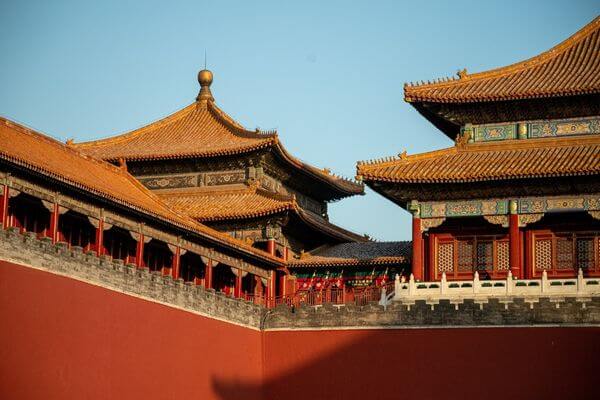
Chinese courts are establishing one-stop multi-mechanism for dispute resolution(一站式多元纠纷解决机制) and one-stop litigation service centers(一站式诉讼服务中心) so that mediation can better synergize with litigation.
I have introduced four development stages of China’s mediation in the previous post. This post will focus on the third stage (the 2000s) and the fourth stage (the 2010s).
I. Court-connected Mediation (the 2000s): Rise and Disadvantages
Court-connected mediation in China began with the “Ma Xiwu Trial Mode” adopted by the Communist Party of China in its base areas during the Anti-Japanese War, that is, the trial mode adopted by a judge named Ma Xiwu (马锡五) at that time: he would conduct investigation personally, solicit the opinions of local people, produce a solution therefor and then persuade the parties concerned to accept the same. [1]
In the 2000s, Chinese courts began to push court-connected mediation to a very important position, which can be demonstrated in the following two aspects: on the one hand, the Civil Procedural Law (CPL) not only stipulated that mediation can be carried out in all links of the proceedings, but also judges were required to give priority to mediation, and only when the mediation failed, can normal trial procedures be carried out; on the other hand, the court would also take the proportion of the number of cases solved by mediation in the total number of cases heard by the judge as an important indicator for his/her performance evaluation.
The reason why Chinese courts attached importance to mediation at that time was to better resolve social conflicts. Since China began its reform and opening up in 1978, and with the economic development, various disputes in society were on the increase, resulting in social tensions. Both the court and the government believed that mediation was conducive to alleviating the tensions.
However, mediation failed to achieve what was expected by the court. Studies have shown that a large number of settlement statements need to be enforced by the court, that is, the parties did not take the initiative to fulfill these settlement statements. [2] This shows that many parties are not satisfied with the result of mediation.
There are two reasons for this:
Firstly, the court’s performance evaluation of judges by reference to cases solved by mediation has led some judges to adopt improper practices in order to procure the parties to reach a settlement agreement. For example, some judges would, in order to procure the parties to agree to the mediation plan, communicate with the parties separately, and hide some information from the parties, improperly threaten them with a losing case during the communication.
Secondly, some judges may have overused mediation in order to evade their duty of case trials. Given that, once both parties agreed on the outcome of mediation, judges no longer needed to worry about the fact-finding, nor the application of law. This could not only greatly reduce judges’ workload, but also exempt judges from assuming the responsibility arising from errors in the fact-finding and the application of law. Moreover, according to the CPL, the parties cannot appeal with respect to the settlement statement, so the judge would not be challenged by the court of appeal on the grounds of the settlement statement so made. [3]
II. The Synergy between Litigation and Mediation (the 2010s): Response and Nationwide Development
Chinese courts are reconstructing their mediation system for reasons as follows: on the one hand, as mentioned earlier, the previous mediation not only failed to achieve what was expected by the court, but also led to the dissatisfaction of the parties and the public; [4] on the other hand, the “Litigation Explosion” faced by Chinese courts forces them to introduce ADR mechanisms, such as mediation, for case handling.
Generally speaking, Chinese courts are trying to synergize with the out-of-court mediation (“docking of litigation and mediation”, or “诉调对接” in Chinese) so as to solve the above problems encountered by the courts through the out-of-court mediation. Up to now, these attempts can be roughly divided into three stages:
1. Judicial endorsement of mediation (2012-2016)
In 2012, China amended its CPL. One of the most important changes is the addition of judicial confirmation on settlement agreements, that is, the court can confirm the settlement agreement upon the application of the parties; the settlement agreement confirmed by the court upon examination can be subject to court enforcement.
This provision creates a premise for the synergy between litigation and mediation: the settlement agreement reached under the facilitation by mediators and mediation institutions other than the court, can be equally enforceable as court decisions with the help of the court.
2. Preliminary attempts as to the synergy between litigation and mediation (2016-2019)
In June 2016, the Supreme People’s Court (SPC) promulgated two judicial interpretations on mediation. [5] According to the provisions thereto, Chinese courts should cooperate with mediation institutions such as people’s mediation organizations, commercial mediation organizations and industry mediation organizations, as well as establish a platform (诉调对接工作平台, “docking platform of litigation and mediation”) for the synergy between litigation and mediation.
Referring to the practice of courts in Beijing, [6] the operation mode of this synergy is as follows:
(1) Mediation under appointment (委派调解): When the parties file a case with the court, if the court considers that the case is suitable for mediation, it will recommend the parties to accept the mediation conducted by specially invited mediator(s)/mediation institution(s) cooperating with the court before the case docket. If the parties do not agree to mediation, the court will then accept the application for case filing and initiate the judicial proceedings therefor.
(2) Mediation under entrustment (委托调解): After the court accepts the parties’ application for case filing, if it considers that the case still can be solved by mediation, the court may continue to recommend the parties to accept the mediation conducted by specially invited mediator(s)/mediation institution(s). If the parties do not agree to mediation or if the mediation fails, the court shall then continue to hear the case.
(3) Mediation by judges: If the case is ultimately heard by the court, the court may also recommend the parties to accept the mediation conducted by the judge or an assistant authorized by the judge prior to the court hearing.
In order to promote this synergy, the court has taken two measures: firstly, the court has taken practical action to implement the judicial confirmation of settlement agreement; secondly, the court allows mediators, mediation institutions and lawyers to set up internal mediation studios.
For example, the Shanghai Financial Court has signed cooperation agreements with banking, securities, insurance, and other financial industry associations and other mediation organizations. These institutions have begun to cooperate with the Shanghai Financial Court in handling mediation cases. [7]
The third stage, one-stop multi-mechanism for dispute resolution (since August 2019)
On 1 August 2019, the SPC promulgated a new judicial interpretation, requiring all courts nationwide to establish one-stop multi-mechanism for dispute resolution and one-stop litigation service center by the end of 2020. [8] This means that the SPC has begun to promote the synergy between mediation and litigation nationwide, as well as to establish such a mechanism based on the litigation service center of the courts.
In fact, the one-stop multi-mechanism for dispute resolution is not limited to the synergy between mediation and litigation, but will cover more issues related to dispute resolution within this one-stop mechanism. For example, various means such as settlement, mediation, notarization, arbitration, administrative mediation, administrative reconsideration, administrative adjudication and litigation will be combined to provide the parties with optimal dispute resolution services; third parties such as experts, scholars, lawyers, psychologists, notaries, appraisers and volunteers will participate in the dispute resolution; the court will provide all relevant litigation services to the parties in relatively fixed office premises and on the Internet.
The one-stop multi-mechanism for dispute resolution mainly aims to deal with the following problems: the increase of the number of lawsuits, the time-consuming judicial process, and the high litigation cost. [9] The SPC hopes that this mechanism will greatly improve the efficiency of dispute resolution.
III. Our Comments
On 7 August 2019, China became one of the first batch of countries to sign the United Nations Convention on International Settlement Agreements Resulting from Mediation (“Singapore Convention”). I believe that this is largely due to the fact that China currently attaches great importance to ADR at home, especially the synergy mechanism between litigation and mediation. Mediation will of course blossom in China.
However, according to my understanding, the ability of China’s mediators and mediation institutions is in an urgent need of improvement. Most mediators are just recently getting involved in this field. In addition, there are few mediation-related courses in law schools and lawyers’ associations in China, nor there are many well-written books on mediation capacity building on the market. Therefore, Chinese mediation institutions and mediators need professional training urgently; courts also need more resources to fully understand how mediation works, so as to review settlement agreements more effectively in judicial confirmation.
References:
[1] 曹守晔(最高人民法院).法院调解——社会主义司法制度的中国特色[J].河南社会科学,2010,18(01):21-24.
[2] 李浩.当下法院调解中一个值得警惕的现象——调解案件大量进入强制执行研究[J].法学,2012(01):139-148.
[3] 吴英姿.法院调解的“复兴”与未来[J].法制与社会发展,2007(03):35-45.
[4] 段维定 唐明. 调解制度的回顾与展望. https://www.chinacourt.org/article/detail/2002/09/id/13464.shtml
[5] 《关于进一步推进案件繁简分流优化司法资源配置的若干意见》、《关于人民法院特邀调解的规定》
[6] 《北京法院关于民事案件繁简分流和诉调对接工作流程管理规定(试行)》
[7]《实现金融领域纠纷诉调对接全覆盖 上海金融法院诉调对接中心成立》, http://shjrfy.hshfy.sh.cn/jrfy/gweb/details.jsp?pa=aaWQ9MjM0z&bt;《多元化解金融纠纷上海金融法院一次性调结18件证券虚假陈述案》http://shjrfy.hshfy.sh.cn/jrfy/gweb/details.jsp?pa=aaWQ9NTA3z&bt
[8] 《关于建设一站式多元解纷机制一站式诉讼服务中心的意见》,http://www.court.gov.cn/zixun-xiangqing-174602.html
[9] 姚建军. 司法在一站式多元解纷机制中的创新发展[N]. 人民法院报,2019-08-08(002).
The views and opinions expressed are solely those of the authors and do not necessarily reflect the official policy or position of China Justice Observer.
Contributors: Guodong Du 杜国栋









